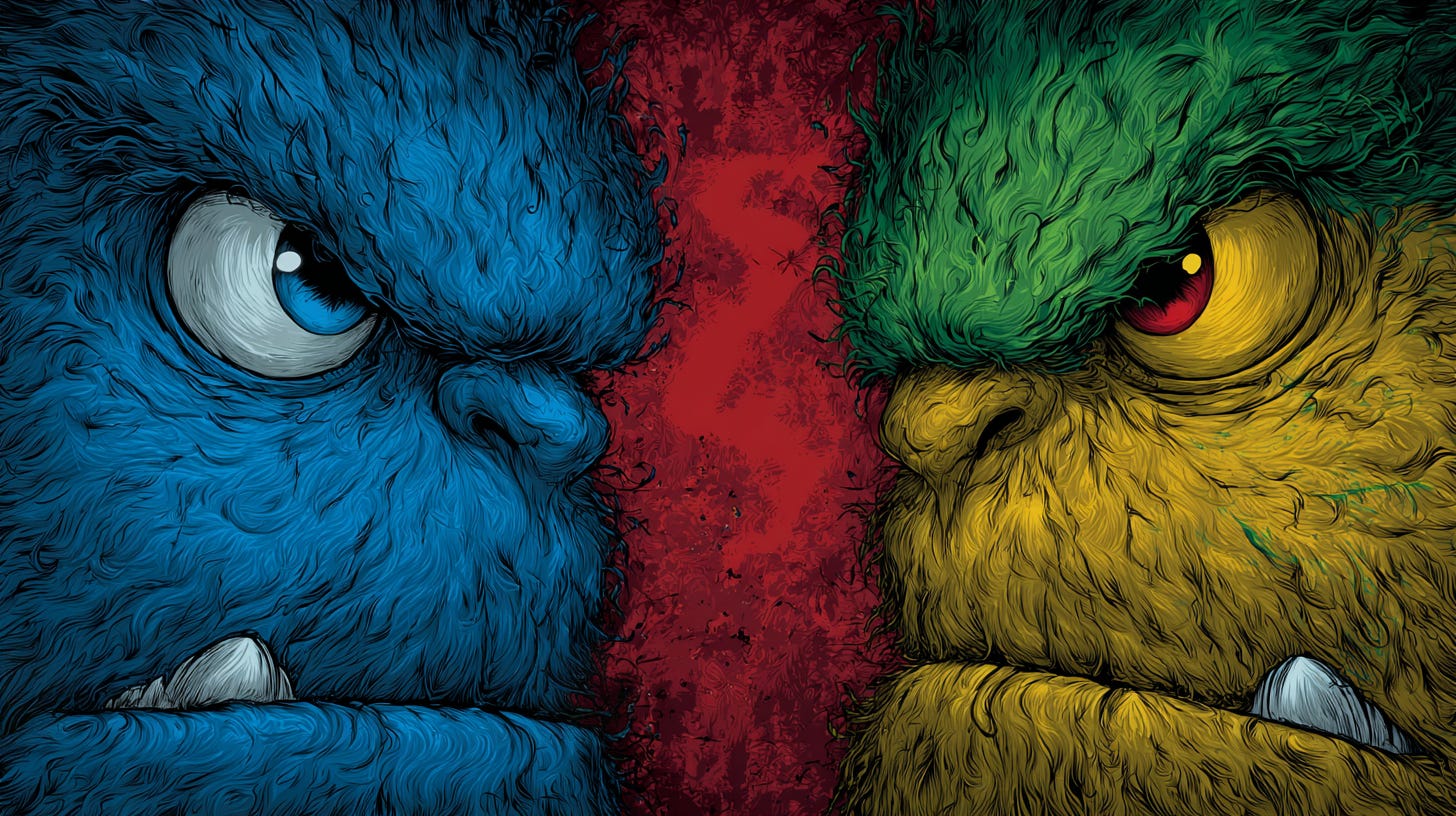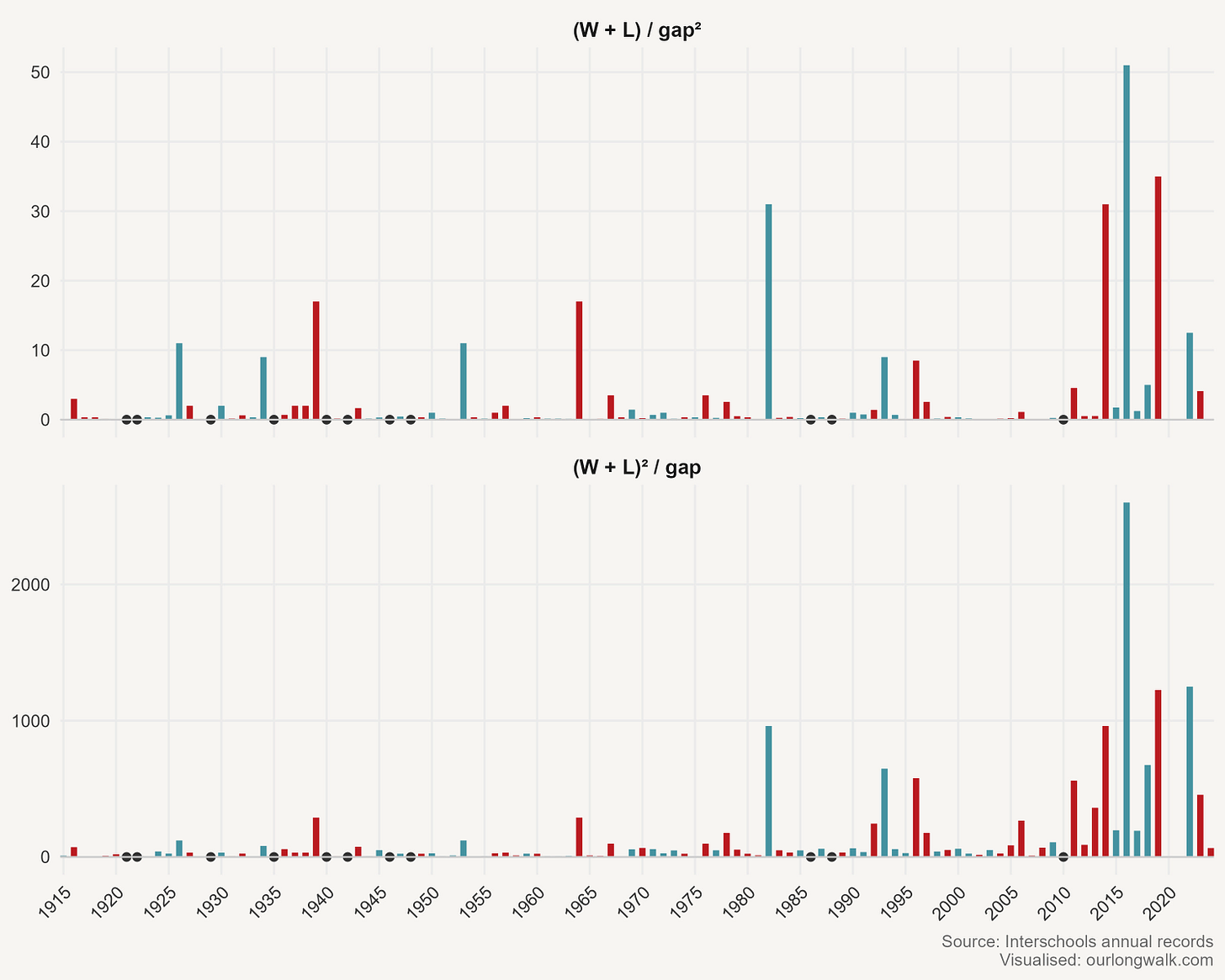Unmatched rivalry
What the epicenter of schoolboy rugby can teach us about life
Some of my most vivid childhood memories are from the weeks before the first Saturday in August. I would join my father, then a teacher at Paarl Gim, in a classroom where covert preparations for the interschools derby were underway. Despite his limited talent with a paintbrush, he oversaw the creation of gigantic banners that, to me, looked like masterpieces. They would hang along the side of the pavilion, just above the mass of students belting out interschools songs. They had rehearsed these songs for weeks, sometimes with more spirit than skill. A few years later, I was among them. On that Saturday each August, we sang all day, our voices hoarse as the main event approached: the late afternoon clash between the two u/19A teams, otherwise known as the biggest schoolboy rugby match in the country – or, depending on who you ask, the world.
It wasn’t always like that. The first interschools match, played in 1915, received little attention. A short notice in the local paper simply announced that the final ‘shield match’ between the two schools would take place at 4pm at the Paarl Sporting Grounds. The world was at war, and most of the news focused on troop collections and the arrival of General Louis Botha, South Africa’s first prime minister, who visited Paarl that August to much fanfare. Sport was still a regular feature in the paper – rugby matches, golf championships, and track events all made the columns – but it was just another item among many. That same month, the paper reported on the handover of fencing equipment from the local police chief to the Paarl Scout Troop, and to celebrate the King’s Birthday, the town organised a sports day on 2 August to raise funds for the Belgian Relief Fund. Events included flat races, team relays, cycling, tug-of-war, basketball, and even a motor cycle and side-car potato race. While troops in Europe fought to a general stalemate, Paarl carried on with its own sporting routines. Rugby was there, but in 1915, it was just another entry in the sports results.

The first match was a simple affair: Boys’ High won 10–0, a result they would not repeat until 1923. The rugby itself looked very different then. Teams included not only schoolboys but also teachers and old boys. That changed in 1927, when it was decided the match would feature only schoolboys. That shift gave the fixture a new sense of identity, and as the years went by, the rivalry began to take on a life of its own.
Over the course of 107 matches, the derby has produced its share of memorable moments. My favourite moment? As a grade 8-student, in 1996, watching Franna Nel convert Pierre Myburgh’s try from the corner to win the ultimate comeback match 18-16 as complete underdogs, after being down 16-6 at half time. That team featured De Wet Barry, who would later go on to represent the Springboks, and Marius Schoeman, who would be a stalwart for the Springbok Sevens. In the years since, several other players have gone on to represent, and even captain, the Boks. In the graph below, I list just a few of them.
The quality of the players has been matched by the closeness of the contest itself. The figure below tracks the cumulative score gap between the two schools. Each year, the winning margin is added (or subtracted), so if Gim wins by ten, ten points are added to the tally; if Boys’ High wins by five, five are subtracted. When the line is above zero, Gim has outscored Boys’ High over time; below zero, Boys’ High has the advantage. Gim dominated the early decades, building a comfortable lead in total points. That changed in the middle of the twentieth century, when Boys’ High overtook them. The early 1980s saw big wins for Gim, but Boys’ High responded strongly in the 1990s and early 2000s. The late 2000s and early 2010s again swung towards Gim, with some decisive victories. Last year’s result, with a margin of 22 pushed the cumulative total to its highest ever. To bring it back to zero, Boys High would need to score more than 78 unanswered points.
Although the contest has always been close, it has, if anything, become even more competitive over time. The two graphs below show a competitive balance score—a gravity equation-like calculation of how evenly matched the teams are. What you want is a high score with a small margin. I report two versions: the top graph gives more weight to the margin, the bottom to the total scores. The trend is clear: the bars rise over time, with the highest scores in the last decade. The professionalisation of schools rugby has made the match more competitive and more attractive to watch.
More attractiveness also means more attention. This year, the game between the top two schools rugby teams in the country will be watched by more than 20,000 supporters that pack Faure Street Stadium in Paarl. It will be broadcast to a large television audience, locally and internationally. (I will tune in from a few thousand feet in the air!) The local press will of course give it ample coverage, but the game is now on the radar of almost every South African rugby fan, even if they have no affiliation to the schools, as they know: this is where you first see future Springboks in action. And because of that, its finding an audience not just in South Africa. A few years ago, even The Economist reported on it.
Over the last 110 years, the game has changed. It will keep on changing. The gigantic banners are now largely gone; the focus has shifted. There will still be singing, and plenty of it, but professionalism has brought a certain soberness, a certain scientificness. That is not necessarily a bad thing, but it does mean that you’re unlikely to see a coach running onto the field in the final minutes to change the kicker for the all-important final kick, like Frikkie van Zyl did in 1996. Or his colleague Chris Beukes, with his Robin Hood hat, running onto the field to preserve the sand from the kick after Nel converted. (Whatever happened to that sand? Surely it deserves an honorary place in the Paarl Gim museum!)
If you think about it, this fanatical rivalry of interschools is fundamentally meaningless and mad. Yet it is also magical. And isn’t that, in the end, as fitting a banner for life as any?
‘Unmatched rivalry’ was first published on Our Long Walk. Thank you for supporting my writing. The images were created with Midjourney v7.






I remember arriving in Paarl in 2003. Coming from the Karoo to complete my high school career there, I did not know anything about the Boishaai/Gim rivalry. That year in August Boishaai won 25 - 6, at that stage it represented a record score. The blue side was captained by Pieter Louw. I remember thinking afterwards: "What's going on here? Why are everybody coming to Paarl to watch us play a second tier team?" Little did I know we would lose the next 5 years in a row!
Fast forward roughly 20 years, we visit Paarl every August for this great event. Old friends (from both sides of Paarl) reconnecting and exchanging stories from "in my dae...". It's the greatest interschools rivalry in the world and thanks to fierce competition and mutual respect, it will stay this way. At the end of the day, we cannot exist without a strong Paarl Gim, and visa versa.
See you in 2026!
I'm not a big rugby fan but I certainly can tell you where one of the greatest clashes in school rugby is: in Tshwane, between Pretoria Boys' High School and Afrikaanse Hoër Seunskool. Unsurpassed rivalry. The two schools contributed to Northern Transvaal. Thanks for the post. Enjoyed.